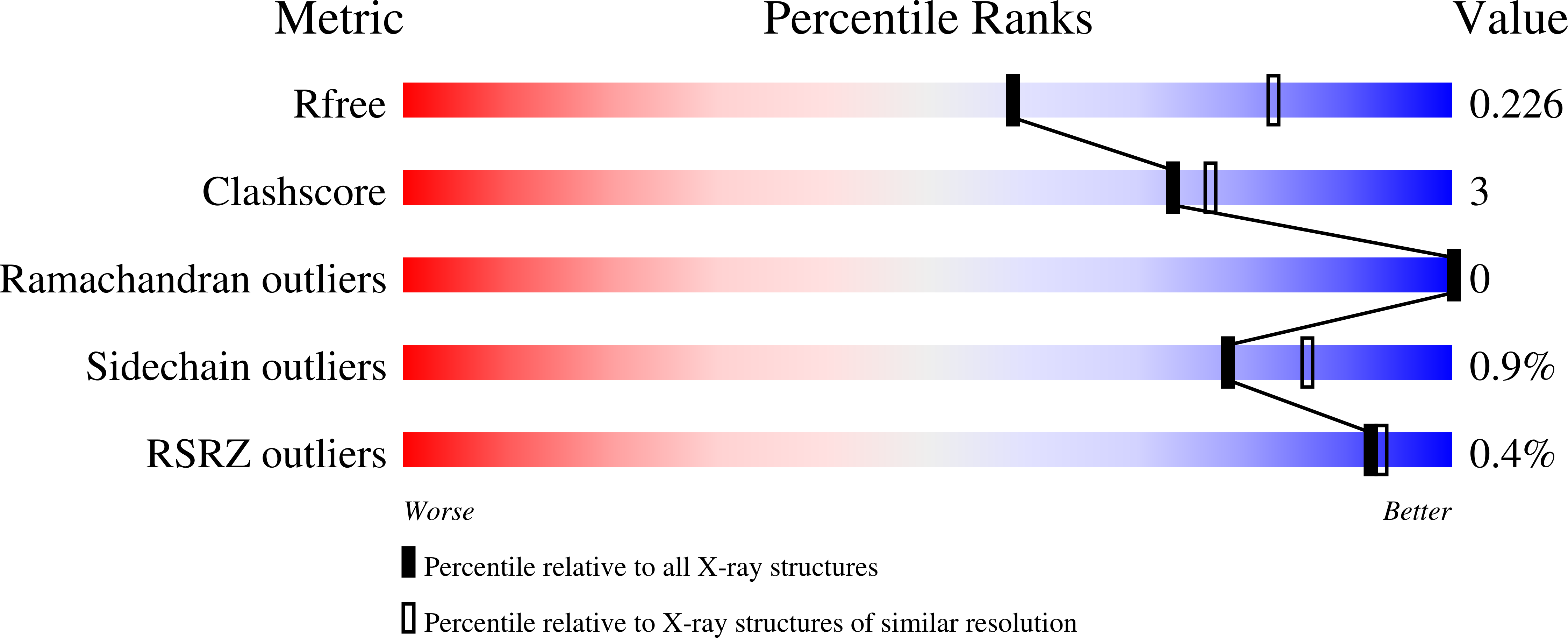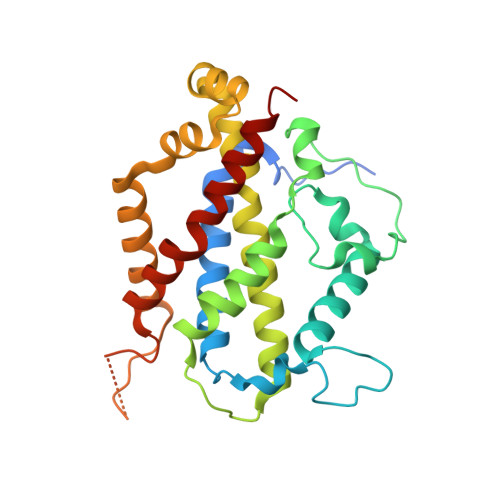Structural evolution of differential amino Acid effector regulation in plant chorismate mutases.
Westfall, C.S., Xu, A., Jez, J.M.(2014) J Biol Chem 289: 28619-28628
- PubMed: 25160622
- DOI: https://doi.org/10.1074/jbc.M114.591123
- Primary Citation of Related Structures:
4PPU, 4PPV - PubMed Abstract:
Chorismate mutase converts chorismate into prephenate for aromatic amino acid biosynthesis. To understand the molecular basis of allosteric regulation in the plant chorismate mutases, we analyzed the three Arabidopsis thaliana chorismate mutase isoforms (AtCM1-3) and determined the x-ray crystal structures of AtCM1 in complex with phenylalanine and tyrosine. Functional analyses show a wider range of effector control in the Arabidopsis chorismate mutases than previously reported. AtCM1 is activated by tryptophan with phenylalanine and tyrosine acting as negative effectors; however, tryptophan, cysteine, and histidine activate AtCM3. AtCM2 is a nonallosteric form. The crystal structure of AtCM1 in complex with tyrosine and phenylalanine identifies differences in the effector sites of the allosterically regulated yeast enzyme and the other two Arabidopsis isoforms. Site-directed mutagenesis of residues in the effector site reveals key features leading to differential effector regulation in these enzymes. In AtCM1, mutations of Gly-213 abolish allosteric regulation, as observed in AtCM2. A second effector site position, Gly-149 in AtCM1 and Asp-132 in AtCM3, controls amino acid effector specificity in AtCM1 and AtCM3. Comparisons of chorismate mutases from multiple plants suggest that subtle differences in the effector site are conserved in different lineages and may lead to specialized regulation of this branch point enzyme.
Organizational Affiliation:
From the Department of Biology, Washington University, St. Louis, Missouri 63130.















